How Innovative are your Talent Development Solutions?
PUBLISHED: 13/09/2018
My biggest take-away from the annual Association for Talent Development (ATD) conference and exposition in San Diego was the focus on innovative, technology-based learning solutions. On the expo floor and in numerous sessions, attendees heard about exciting new developments using technologies such as Artificial Intelligence, Chat Bots, SimBots, Virtual Reality, Business Simulations, and Augmented Reality.
But how much actual disruption and innovation is actually occurring in learning today? To give us insight into this question, Advantexe conducted a survey of visitors to our booth.
The Survey Matrix
We built a Learning Innovation Matrix (LIM) along two axes: traditional learning solutions to innovative learning solutions, and live delivery to virtual delivery. The four quadrants are:
- Innovative/Live – New solutions being incorporated into live learning events (example: improvisational role plays with professional actors playing prescribed roles)
- Traditional/Live – Conventional in-person learning events (example: instructor-led classroom event using printed materials and/or slides)
- Innovative/Digital – New learning leveraging virtual delivery mechanisms (examples: Artificial Intelligence and Virtual Reality)
- Traditional/Digital – Conventional learning modalities leveraging virtual delivery mechanisms (example: webinar)
The illustration below shows how we populated the LIM with a variety of learning solutions along these axes, coding each in terms of its cost.
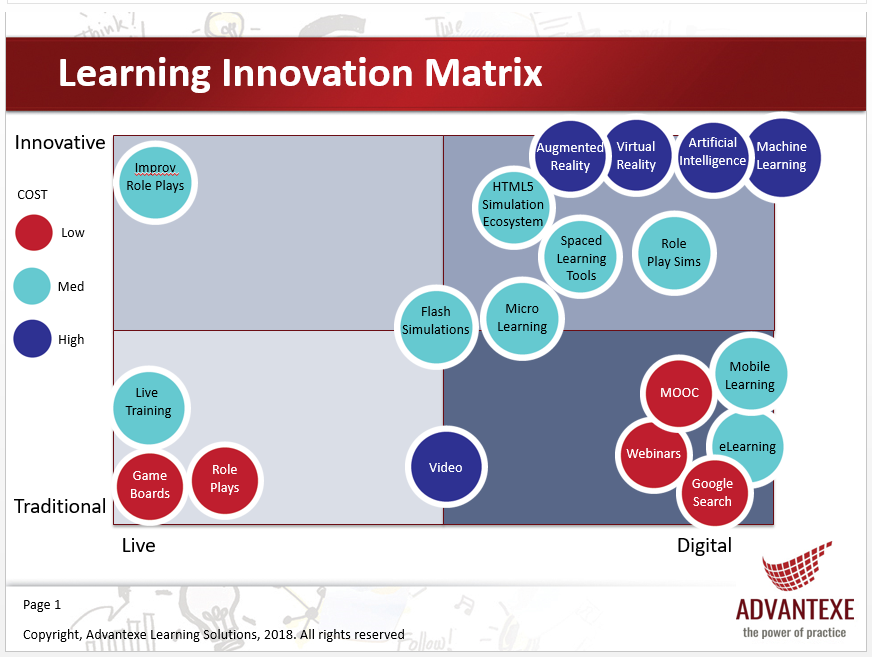
Gathering Data
In our booth at ATD we asked more than 70 people these two matrix-specific questions:
- In general, in what quadrant would you place your company right now?
- In what quadrant is your company likely to be in the next five years?
We also asked:
- What barriers need to be removed to allow your company to be more innovative?
The Survey Results
Question 1 – In general, in what quadrant would you place your company right now?
Given all the expo’s buzz about innovation in learning, I was somewhat surprised with the results of this question. Over 80% of responders work in companies that deliver traditional training.
- 44% provide only live, classroom learning
- 36% provide traditional learning using basic digital delivery tools such as eLearning and webinar
- Only 19% felt their companies currently provide innovative learning solutions
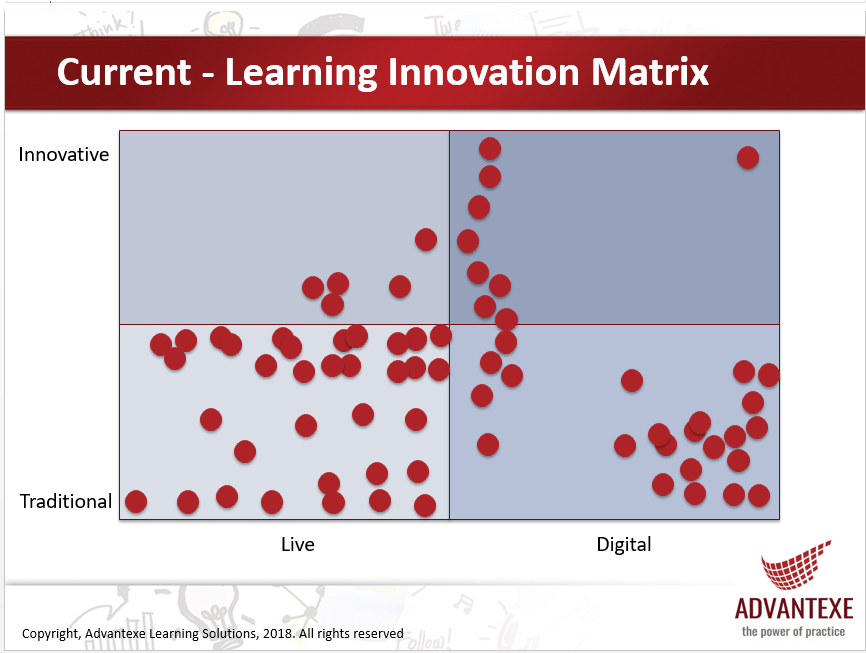
Question 2 - In what quadrant is your company likely to be in the next five years?
While much of today’s cutting-edge technology is new and unverified, we assume it will become more familiar and proven over the next five years so we expected to see a pretty drastic change in the responses to question 2. The data supports this assumption.
- Our respondents predicted a significant reduction of traditional/live training, assuming it will decline from 44% (current state) to 18% (five years from now)
- Much of that shift is predicted to go to digital delivery:
- Innovative Training/Digital Delivery – is expected to increase from 13% to 29%
- Traditional/Digital – is expected to rise from 36% to 40%
- Innovative Training/Live Delivery – is expected to grow from 7% to 13%
- 42% of respondents said that in five years their companies would be offering innovative solutions, a significant uptick from the 19% that are currently providing such solutions
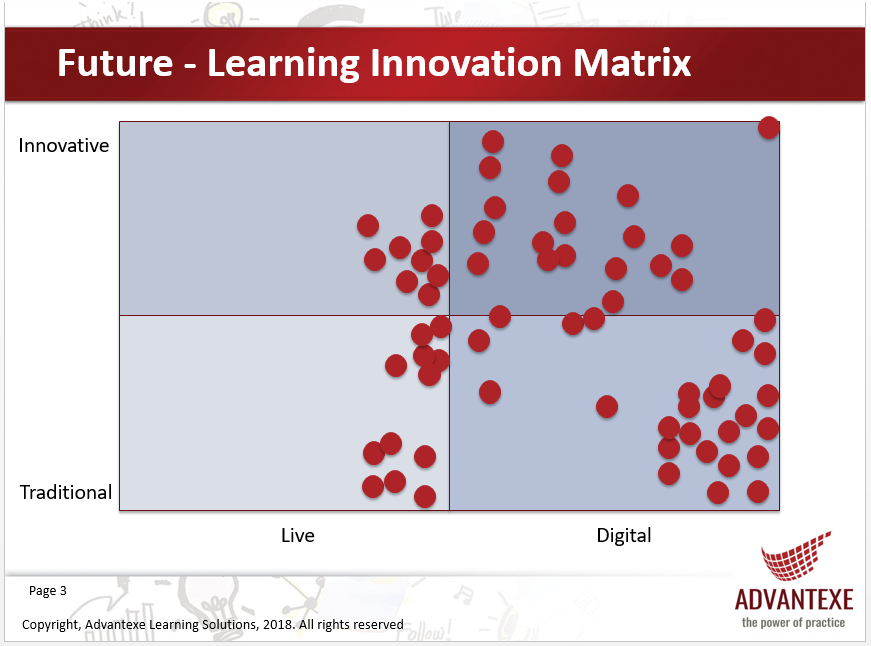
In general, we heard a lot of enthusiasm for innovation in learning. Responders said things like
- “I see digital delivery tools giving us the flexibility to have learning on demand vs. waiting for the next time the course is offered in six months or a year.”
- “I’m looking forward to using artificial intelligence and other new technology to really make training come alive and be more sticky.”
- “My company is global. Innovative learning should help us to work together across geographies much more efficiently and create a truly common culture.”
Barriers to Innovation in Learning
Given this level of enthusiasm, and the reality that disruptive innovation in learning is here to stay, we asked, “What barriers need to be removed to allow your company to be more innovative?” There were four consistent responses:
- Security – The biggest concern about moving to digital and innovative solutions is security of data. Responders indicated that for every learning solution involving digital delivery, their IT and/or Risk functions request reams of information and special testing to ensure the associated data is secure. These functions also require an unprecedented level of data security verification from external learning vendors, to the point where some vendors are increasing their fees to cover the extra administrative work involved with security compliance.
- “Technology will not work” – Some responders said that while they thought many of the new technologies are “cool,” they are not sure the technologies will work, or will fit their organization.
- “Unless someone figures out how to overcome the challenges of awkward goggles that have to be sanitized between each use, things like virtual reality will never happen.”
- “Augmented reality seems cool, but it is really hard to implement. None of the apps that play the AR solutions are standardized.”
- User Readiness for technology-based learning – Responders expressed a concern that most people still like to learn face to face. Despite the opportunities presented by immersive technologies, responders worried that they will not be readily adopted because of learners’ reluctance to interact with “robots.”
- Cost – While many responders recognized that costs of innovative solutions are high because they leverage new technologies, they were not convinced that costs will come down anytime soon.
Summary
At ATD we clearly heard that companies are struggling to make the leap to digital and innovative learning solutions. At the same time, most learning professionals we spoke to were excited about the possibilities new technologies bring to the talent development space. As an organization that focuses on innovation in talent development, we at Advantexe see the enormous potential of integrating workstreams with learning tools and Artificial Intelligence to create individualized learning journeys available on-demand. We’re excited about leveraging technology to achieve the elusive “holy grail” of learning: proving the business impact of training.
About Advantexe
Advantexe Learning Solutions is an award-winning, global, training and performance improvement organization specializing in Business A...en, Business Leadership, and Strategic Business Selling using computer-based business simulations as the catalyst for learning.
We partner with you to build the skills your professionals, managers and leaders need to execute their business strategies and achieve improved business results for your organization. Advantexe provides your organization with integrated learning journeys that incorporate adult learning methodologies and a learn-by-doing approach to ensure a continuous learning environment that enhances retention, encourages immediate real-world application, and maximizes your return on training investment. Our learning toolkit includes skills assessment simulations, dynamic learning engagements, and reinforcement tools to produce a measurable impact on your business.

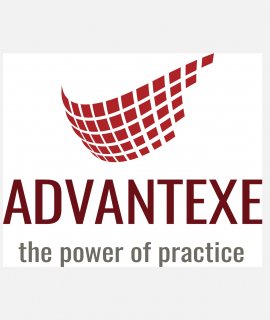






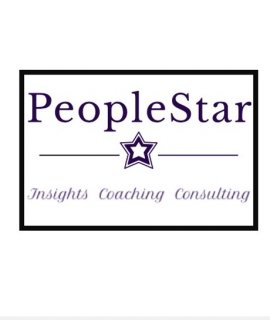

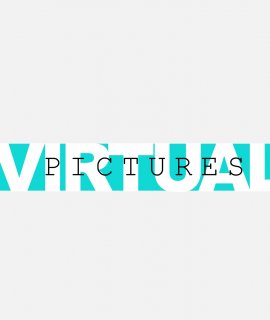




_square_270x320.jpg)



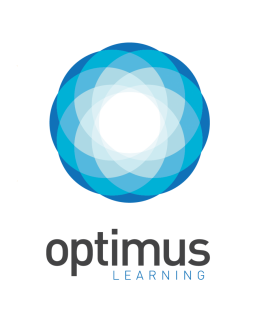



_270x320.jpg)
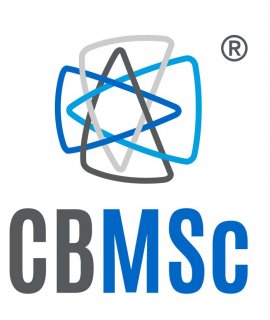
_270x320.png)
I'm not sure that I agree that the importance of classroom training will diminish to quite the extent mentioned. I may be wrong, but my experience of new learners - millennial and younger - indicates that there is still a need for social formal learning as part of a fuller more agile blended offer. I do agree that the opportunities afforded by technology are just being scratched at the moment and exciting disruptive times lie ahead.
Exciting times to be in Learning I think. Caroline G
Anonymous User 28th Nov 2018